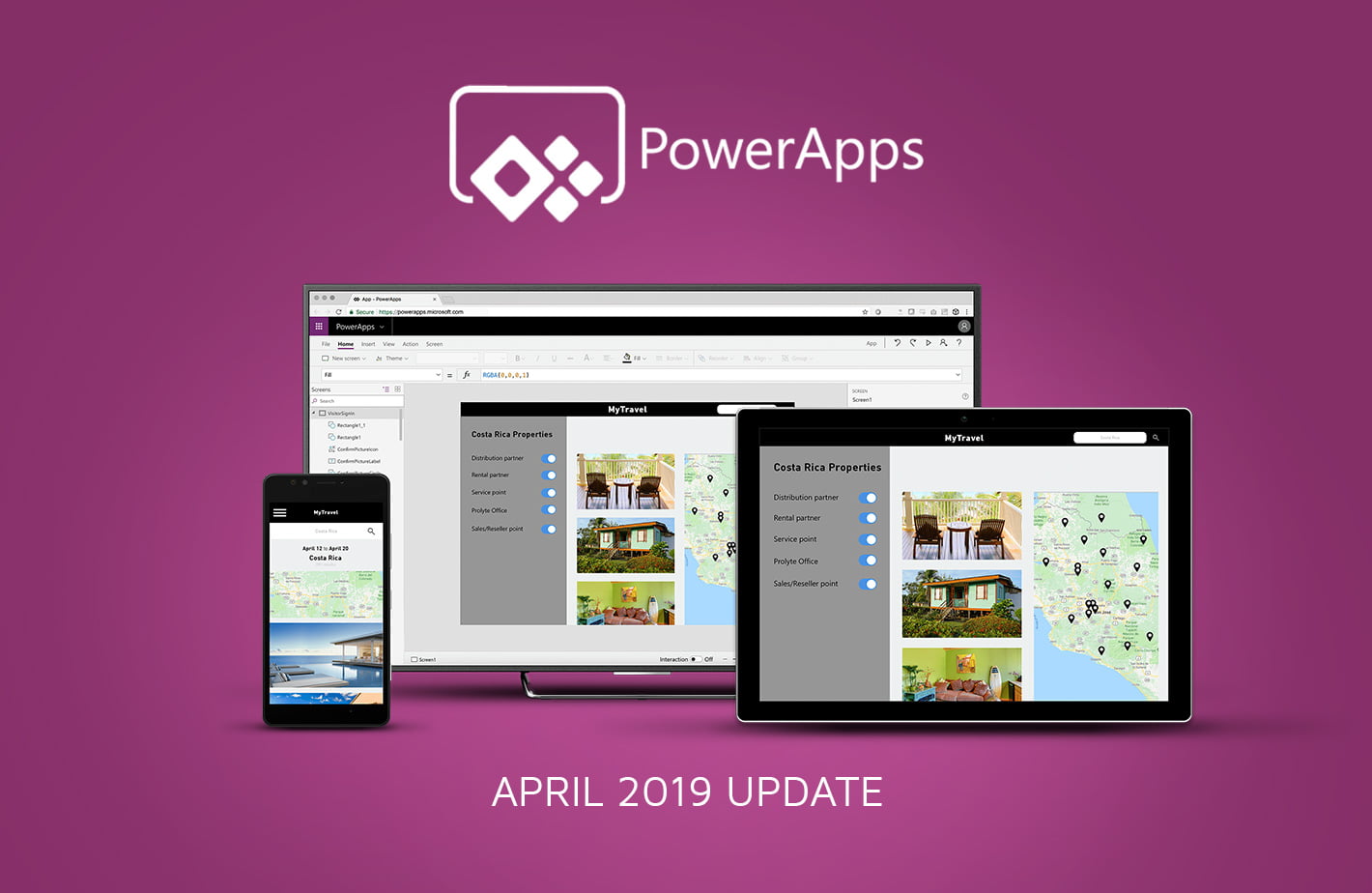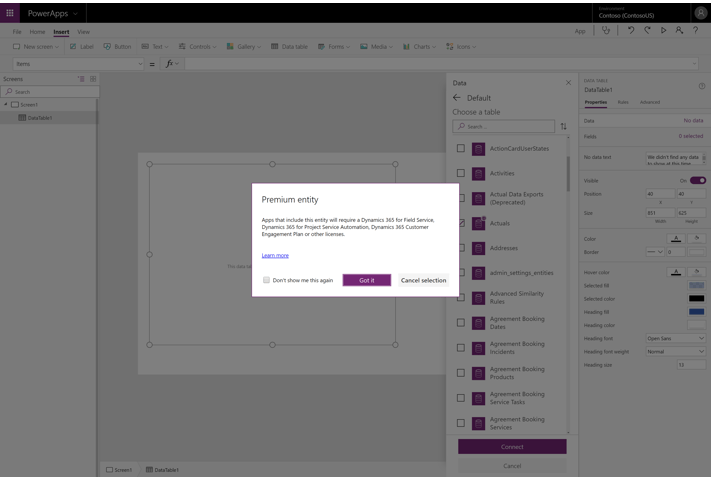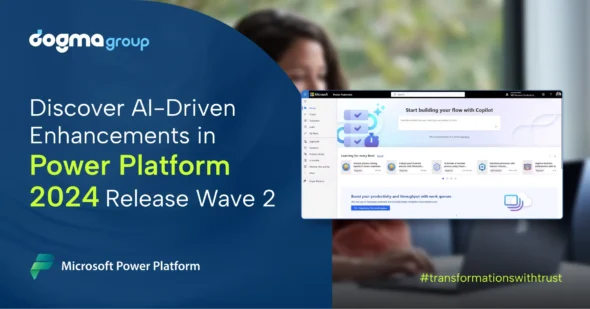Rolled out in 2015, PowerApps is a powerful mobile solution that allows you to create, develop and share custom applications without the requirement of coding. With PowerApps, you can help streamline your organisation’s day to day tasks by creating business apps that can be built in weeks with limited technical knowledge.
PowerApps provide simple drag-and-drop functionality to design apps and work on iOS, Android and Windows devices. They link seamlessly to Dynamics365 and other O365 products.
PowerApps has an intuitive visual design and has a familiar look and feel taken from applications like PowerPoint plus. Altogether this equals rapid development, speed to market and you don’t pay astronomical £100,000+ development costs.
With PowerApps getting a lot of attention and popularity day by day for its ability to rapidly develop custom apps, here are all the important updates that are set to roll out from April to September.
View results of formulas and subformulas in canvas apps
Canvas apps are operated by composing functions like ‘Filter’ and ‘Sort’ to form powerful formulas. When the compositions get much more complex then there is lack of transparency and makes it difficult to understand what’s happening and debug issues.
Now, this feature helps you to get into the middle of the formula and understand what’s happening in the system so that the understanding and debugging of apps get easier and quicker.
New view designer for CDS for Apps
With this new capability, building new system views is easy and quick with the new view designer. Some important ability includes:
- Can add fields to the entity directly within the view designer.
- Drag in new columns from the field drawer.
- Add advanced filtering in the property pane.
- Select columns to change the header name and to define a specific column width.
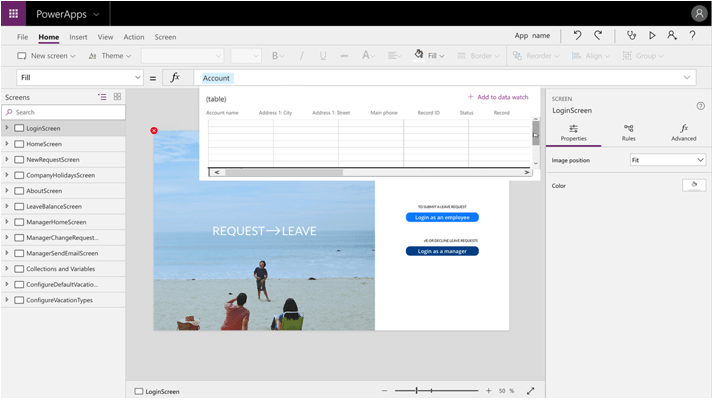
App-licensing requirements presented to makers while building apps
Users might need a different license to run the app if the maker adds a complex or restricted entity to a canvas app. Hence, App makers will be notified as shown in the figure below.
App usage reports in your inbox
From this update, app makers will regularly be notified (via email and in-product) about end-users app usage along with a recommendation to improve their app experience. Also, tailored based communication on the app to include recommendations for learning resources.
Improved inline help for makers and admins
App makers and admins will be assisted step-by-step guidelines with resources available in PowerApps studio, the Power Platform admin center, and Microsoft Flow for common scenarios.
We can see the example of guided-learning help for these common scenarios:
- In Microsoft Flow, create an approval process.
- In the Power Platform admin center, enable a mailbox to use server-side sync.
- In PowerApps Studio, reuse menu selection in different screens.
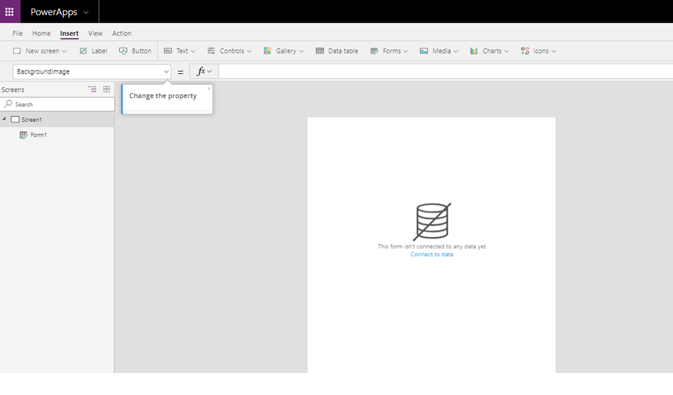
Improved solution checking capabilities
Solution Checker is updated with new capabilities for parsing and acting on results. Also, performance and stability checks are implemented so that you can quickly identify problematic patterns in your solutions.
Embedding canvas apps in model-driven forms
New capabilities that enable deeper integrations between model-driven forms and embedded canvas apps are included in this release. Some of these capabilities include:
- Trigger methods on the host model-driven form from the embedded canvas app.
- Enhanced and streamlined authoring experience via the new model-driven form designer.
Create canvas apps with responsive layout
In the previous versions, screens of the canvas app are usually scaled to fit the space that the app host provides. But as the screens get bigger, the app can’t adapt to the environment. With this new update, users can now have better app experience that enables app makers to create responsive canvas apps by writing formulas.
One unified control framework
PowerApps Control Framework (PCF) is the interface for all the new controls across PowerApps for both canvas and model-driven apps. Through this new update, developers have access to a rich framework API set and can build production-grade controls due to continued investments in framework capabilities. Dev tools support building PCF controls, rule-based validation, faster testing and debugging, and solution deployment.
Sign in more easily to Dynamics 365 on a mobile device
You can now sign in to the D365 app on an Android device or iOS device using email address instead of server URLs and can access app across all their available online organizations and environment.
Test out new updates first in Preview
Customers were unable to sign up easily to get early access to updates across Dynamics 365 for customers engagements and were unable to develop and validate the apps. But with the new update, customers have a way to develop and test new updates to the platform and can create a ‘preview’ environment or they can copy an existing environment over to ‘preview’ from the Power Platform admin center.

Improved supportability for admin
Now admins have a unified support experience across all power platforms and can get self-help recommendation to resolve issues on their own. Also, they can have a seamless connection with Microsoft support agents and can get quick help in case of a system-wide issue impacting all users.
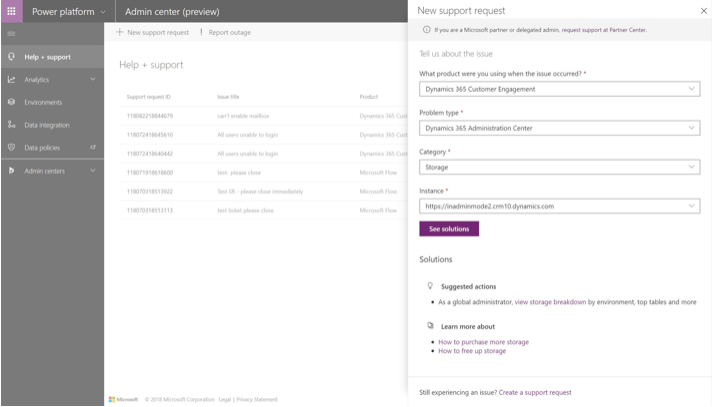
New storage-consumption and trend reports
Admins can have a closer look into how their organization consumes storage capacity and updated report of all storage consumed available from the admin center.
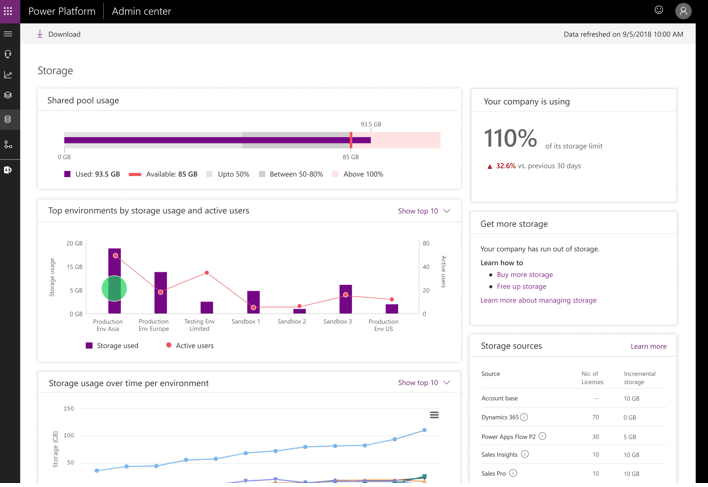
Unified Interface as the default experience
Unified interface in PowerApps improves user’s home page experience to view model-driven apps and space to work in simple purpose-built apps. This makes the unified interface better and more capable than legacy web experience.
Office value-adds in Dynamics 365
Dynamics 365 users are part of this coherent experience, as their contact management in Unified Interface is enhanced by a seamless integration with live profile cards.
Streamlined PowerApps experience
New modern experiences working with Common Data Service for Apps are moving into one streamlined portal experience. Users will be able to move between form, entities, solution, and view designers in one shared web experience.
Share entities by using security groups in Azure Active Directory
You can share data in Common Data Service for Apps with one or more security groups in Azure Active Directory. To share this data, create one or more custom security roles for your entities and assign those roles to security groups instead of to individual users. You can share apps, flows, and entities with the same security group.
Seamless image support in CDS for Apps (Public Preview)
PowerApps that are built on Common Data Service (CDS) for Apps offer seamless support for images from all app types. Users can provide richer data in addition to attaching files and notes.
Teams is a first-class distribution channel
Deeper integration with Teams will allow IT admins to seamlessly publish any app built on the Microsoft Business Application Platform to the Teams App Catalog for broad app distribution in the enterprise through Teams.
If you have any questions in the meantime regarding the April update, just call our friendly team on 01296 328689. Our team will be more than pleased to discuss these with you.
If you want to learn about the other D365 related updates, follow the links below:
- What’s New in Dynamics 365 for Customer Service April 2019 Release
- What’s New in Dynamics 365 for Field Service April 2019 Release
- What’s New in Dynamics 365 for Marketing April 2019 Release
- What’s New in Dynamics 365 for Sales April 2019 Release
- What’s New in PowerBI April 2019 Release
- How to Deploy Dynamics 365 April 2019 Release
Also, being one of the most trusted Microsoft PowerApps partners, we have the capability to design and build custom solutions to meet your organisational needs. But first and foremost, we can help you understand the tremendous benefits of this tool and how it can leverage your business. Visit our PowerApps page or call us at +44 01296 328 689 to learn more.
